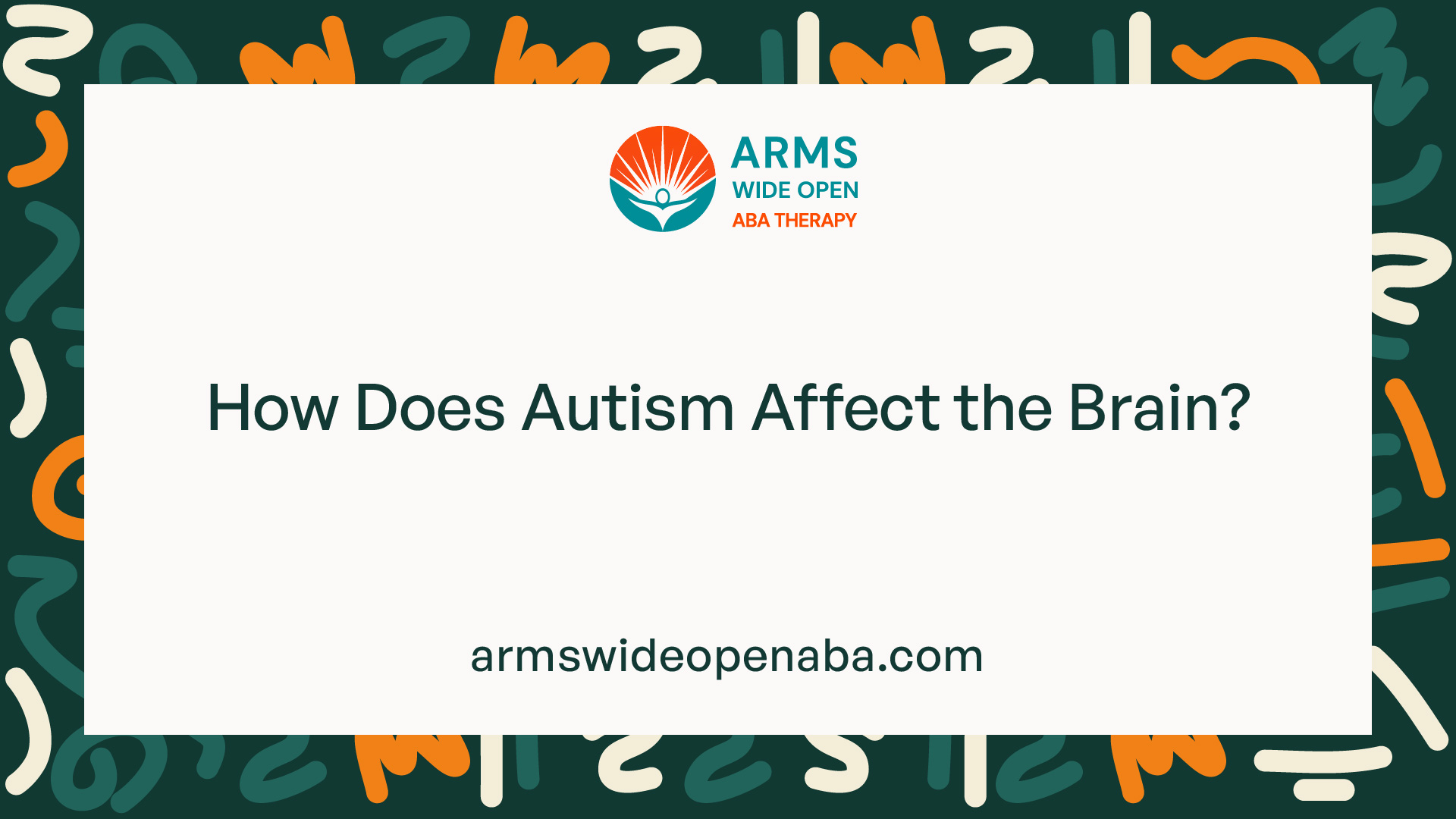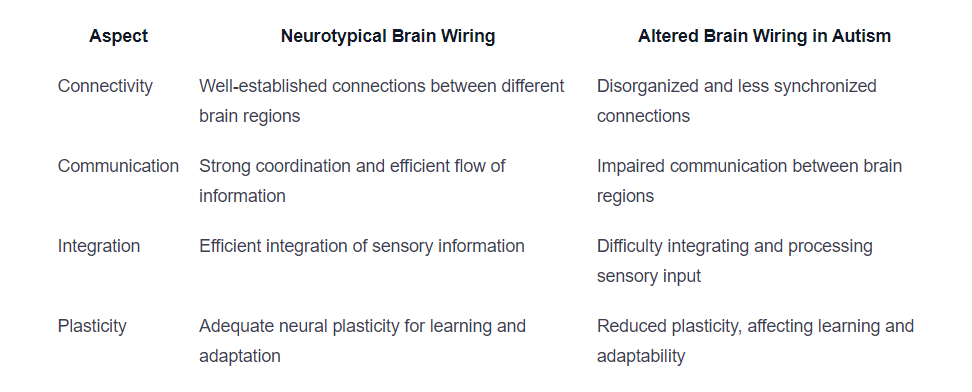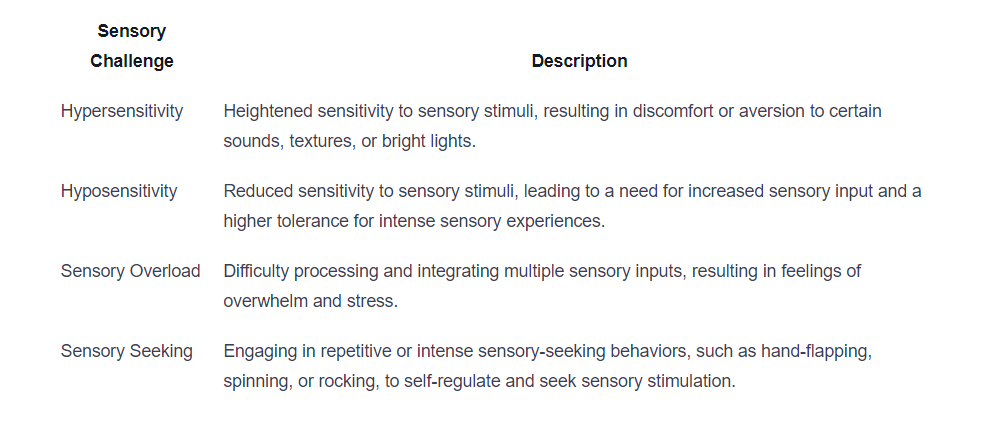How Does Autism Affect the Brain?
Unveiling the impact of autism on brain wiring. Explore how it shapes behaviors and alters neuronal connections.
.jpeg)
Understanding Autism
To comprehend the impact of autism on the brain's wiring, it is important to first gain an understanding of what autism is and how it is diagnosed. Autism is a neurodevelopmental disorder that affects communication, social interaction, and behavior. It is characterized by a wide range of symptoms and severity levels, making each individual's experience unique.

What is Autism?
Autism, also known as Autism Spectrum Disorder (ASD), is a complex developmental condition that typically appears during early childhood. It is characterized by challenges in social interaction, communication difficulties, and repetitive behaviors or restricted interests. Individuals with autism may exhibit a wide range of symptoms, from mild to severe, and may also have co-occurring conditions such as intellectual disabilities or sensory sensitivities.
Prevalence and Diagnosis
Autism is a relatively common neurodevelopmental disorder, with a global prevalence of approximately 1 in 160 children. The Centers for Disease Control and Prevention (CDC) estimates that around 1 in 54 children in the United States are diagnosed with autism.
Diagnosing autism involves a comprehensive evaluation by healthcare professionals, typically including a combination of behavioral observations, interviews with caregivers, and standardized assessments. The Diagnostic and Statistical Manual of Mental Disorders (DSM-5) is widely used as a diagnostic tool, providing criteria for identifying and classifying autism based on observed behaviors and impairments.
Early identification and intervention are crucial for individuals with autism. Early intervention services can help improve communication skills, social interaction, and overall quality of life for individuals on the autism spectrum.
Understanding what autism is and the prevalence rates can help raise awareness and promote acceptance of individuals with autism in society. By recognizing the unique challenges faced by individuals with autism, we can work towards creating a more inclusive and supportive environment for everyone.
The Brain and Autism
Understanding the relationship between the brain and autism is crucial for comprehending how this neurodevelopmental disorder affects individuals. Autism is characterized by a range of challenges in social communication, behavior, and sensory processing. These difficulties stem from the impact of autism on brain wiring and function.
Neurodevelopmental Disorders
Autism falls under the category of neurodevelopmental disorders, which are conditions that affect the development and function of the nervous system. These disorders typically manifest early in childhood and persist throughout a person's life.
Neurodevelopmental disorders, including autism, are believed to arise from a combination of genetic and environmental factors. Research suggests that abnormalities in brain structure and function play a significant role in the development of these disorders.
Impact of Autism on Brain Wiring
In individuals with autism, there are distinct differences in brain wiring compared to neurotypical individuals. The wiring refers to the connections between neurons, which are the cells responsible for transmitting information in the brain.
Typically, the brain's wiring develops through a complex process during early childhood. However, in autism, this process is disrupted, leading to altered connectivity patterns. These alterations affect various brain regions and can impact information processing, communication, and behavior.
To understand the impact of autism on brain wiring, let's consider the following:

These alterations in brain wiring contribute to the challenges experienced by individuals with autism in various domains, including social communication, sensory processing, and repetitive behaviors.
Understanding the impact of altered brain wiring in autism is crucial for developing effective interventions and therapies. By targeting these specific neural differences, researchers and clinicians can work towards improving the lives of individuals with autism and helping them navigate the complexities of the world around them.
Neuronal Connections
To understand how autism affects the brain, it is important to examine the neuronal connections, or the wiring, within the brain. The intricate network of connections between neurons enables the brain to function and communicate effectively. In individuals with autism, these connections may be impacted, leading to differences in information processing and behavior.
Normal Brain Wiring
In a typically developing brain, the neuronal connections follow a specific pattern, allowing for efficient communication between different regions. The connections are formed through a process called synaptogenesis, which occurs during early brain development.
These connections enable different areas of the brain to work together, allowing for the integration of sensory information, social interactions, and various cognitive functions. The synchronized communication between brain regions is crucial for normal functioning and behavior.
Disrupted Brain Wiring in Autism
In individuals with autism, the wiring of the brain can be disrupted, leading to altered connectivity patterns. Research suggests that there may be both overconnectivity and underconnectivity in different brain regions, resulting in atypical information processing.
The disrupted brain wiring in autism can affect various aspects of cognition and behavior. It may contribute to difficulties in social communication, sensory processing, and the presence of restricted and repetitive behaviors commonly seen in individuals with autism.
To further understand the impact of autism on brain wiring, researchers use techniques such as functional magnetic resonance imaging (fMRI) and diffusion tensor imaging (DTI) to study the connectivity patterns in the brains of individuals with autism. These studies have provided valuable insights into the underlying neural mechanisms associated with the disorder.
Understanding the neuronal connections in autism is a complex and ongoing area of research. By studying the differences in brain wiring, researchers aim to unravel the underlying mechanisms of the disorder and develop more targeted interventions to support individuals with autism.
Brain Regions Affected by Autism
Autism is a complex neurodevelopmental disorder that can have a profound impact on various regions of the brain. Understanding how autism affects these brain regions is crucial for gaining insights into the behavioral manifestations of the condition. In this section, we will explore three key brain regions that are commonly affected by autism: the frontal lobes, temporal lobes, and limbic system.
Frontal Lobes
The frontal lobes play a crucial role in executive functions, such as decision-making, planning, and social behavior. In individuals with autism, there is evidence of structural and functional abnormalities in the frontal lobes. These abnormalities can contribute to difficulties in social communication, impulse control, and the ability to understand and respond appropriately to social cues.
Research has shown that the frontal lobes in individuals with autism may exhibit reduced connectivity between different regions, affecting the integration and processing of information. This disruption in frontal lobe connectivity may contribute to the challenges individuals with autism face in social interactions and behavioral regulation.
Temporal Lobes
The temporal lobes are involved in various functions, including language processing, auditory perception, and facial recognition. In individuals with autism, there is evidence of altered structure and function in the temporal lobes. These alterations can impact language development, social perception, and the ability to recognize and interpret facial expressions.
Studies have shown that individuals with autism may exhibit differences in the size and connectivity of specific regions within the temporal lobes, such as the superior temporal gyrus. These differences can affect the processing of auditory and social information, contributing to difficulties in language and social communication.
Limbic System
The limbic system is a group of interconnected brain structures that play a crucial role in regulating emotions, memory, and motivation. In individuals with autism, there is evidence of atypical functioning and connectivity within the limbic system. These abnormalities can contribute to difficulties in emotional regulation, the formation of social bonds, and the processing of social and emotional cues.
Research has shown that individuals with autism may exhibit altered activation and connectivity in various limbic structures, such as the amygdala and hippocampus. These alterations can impact emotional processing, memory formation, and the ability to navigate social situations effectively.
Understanding the impact of autism on these brain regions provides valuable insights into the underlying neurobiology of the condition. By unraveling the intricate connections between brain wiring and behavior, researchers and clinicians can develop targeted interventions and therapies to support individuals with autism in their social, emotional, and cognitive development.
Behavioral Impacts of Altered Brain Wiring
When it comes to autism, the impact on brain wiring can have significant effects on behavior. Understanding these behavioral impacts is crucial for gaining insights into the challenges faced by individuals with autism. Here, we will explore three key areas where altered brain wiring can manifest in behavior: social communication difficulties, sensory processing challenges, and restricted and repetitive behaviors.
Social Communication Difficulties
One of the hallmark features of autism is social communication difficulties. Altered brain wiring can disrupt the development and functioning of the regions responsible for social interaction, such as the prefrontal cortex and the mirror neuron system. As a result, individuals with autism may experience challenges in understanding and using verbal and non-verbal communication cues.
These difficulties can manifest in various ways, including:
- Limited eye contact and reduced ability to interpret facial expressions.
- Difficulty understanding and responding to social cues, such as body language and tone of voice.
- Challenges in initiating and maintaining conversations.
- Impaired ability to understand and express emotions appropriately.
- Difficulty with joint attention, which involves sharing attention with others towards a common focus.
Sensory Processing Challenges
Altered brain wiring in individuals with autism can also affect sensory processing. The brain's ability to interpret and respond to sensory information, such as touch, sound, and light, may be disrupted. This can lead to sensory sensitivities or sensory-seeking behaviors.
Some common sensory processing challenges experienced by individuals with autism include:

Restricted and Repetitive Behaviors
Individuals with autism often exhibit a range of restricted and repetitive behaviors, which can be linked to the altered brain wiring associated with the condition. These behaviors serve as a way for individuals with autism to cope with their environment and manage anxiety. It's important to recognize that these behaviors are not a choice but rather a manifestation of the unique way their brains process information and respond to stimuli.
Examples of restricted and repetitive behaviors in autism include:
- Repetitive body movements, such as hand-flapping, rocking, or spinning. These movements can help individuals with autism regulate their sensory input and manage stress or excitement.
- Obsessive interests in specific topics or objects. Individuals with autism may develop intense fascinations with particular subjects, such as trains, dinosaurs, or historical events. They may spend hours researching and discussing these topics, often to the exclusion of other activities.
- Need for routines and rituals, with resistance to change. Many individuals with autism find comfort and security in predictable routines and may become distressed when these routines are disrupted. They may insist on following specific patterns or sequences in their daily activities.
- Echolalia, the repetition of words or phrases. This can involve immediately repeating what someone else has said (immediate echolalia) or repeating phrases heard in the past (delayed echolalia). Echolalia can serve as a way for individuals with autism to process and communicate information.
- Preoccupation with certain sensory experiences, such as staring at lights or spinning objects. Individuals with autism may seek out or avoid specific sensory stimuli, depending on their individual sensory processing differences. Some may find certain sounds, textures, or visual patterns soothing, while others may find them overwhelming.
Understanding these behavioral impacts of altered brain wiring in autism can help us develop strategies and interventions to support individuals with autism in their daily lives. By creating an inclusive and understanding environment, we can help individuals with autism thrive and reach their full potential. This involves providing accommodations and modifications to support their unique needs, such as:
- Offering sensory-friendly spaces and activities
- Incorporating predictable routines and visual schedules
- Respecting and accommodating individual interests and preferences
- Using clear, concise language and visual supports to facilitate communication
- Providing opportunities for self-regulation and sensory breaks
By embracing neurodiversity and recognizing the strengths and challenges associated with autism, we can foster a more accepting and supportive society for all individuals on the spectrum.
Sources
https://www.abtaba.com/blog/autism-affect-the-brain
https://www.healthcentral.com/condition/autism/autism-brain-differences
https://www.thetransmitter.org/spectrum/brain-structure-changes-in-autism-explained/
Similar articles
We’re here to help you

Our team is here to assist you in this process. Contact us for any assistance.
it’s easy to apply
We Accept Most Insurances
Our in-network insurance partnerships make ABA therapy more accessible to families throughout our service areas.







Our Insurance Process
We'll request your insurance details to help us verify your plan's coverage for ABA therapy. Once we've received this information, we'll walk you through your benefits, including copayments, deductibles and out-of-pocket maximums, so you know what to expect in advance.
Our team will then handle the preauthorization and all the necessary paperwork.
.svg)





















.jpeg)


































.jpeg)




.jpeg)







.jpeg)











.jpeg)
















